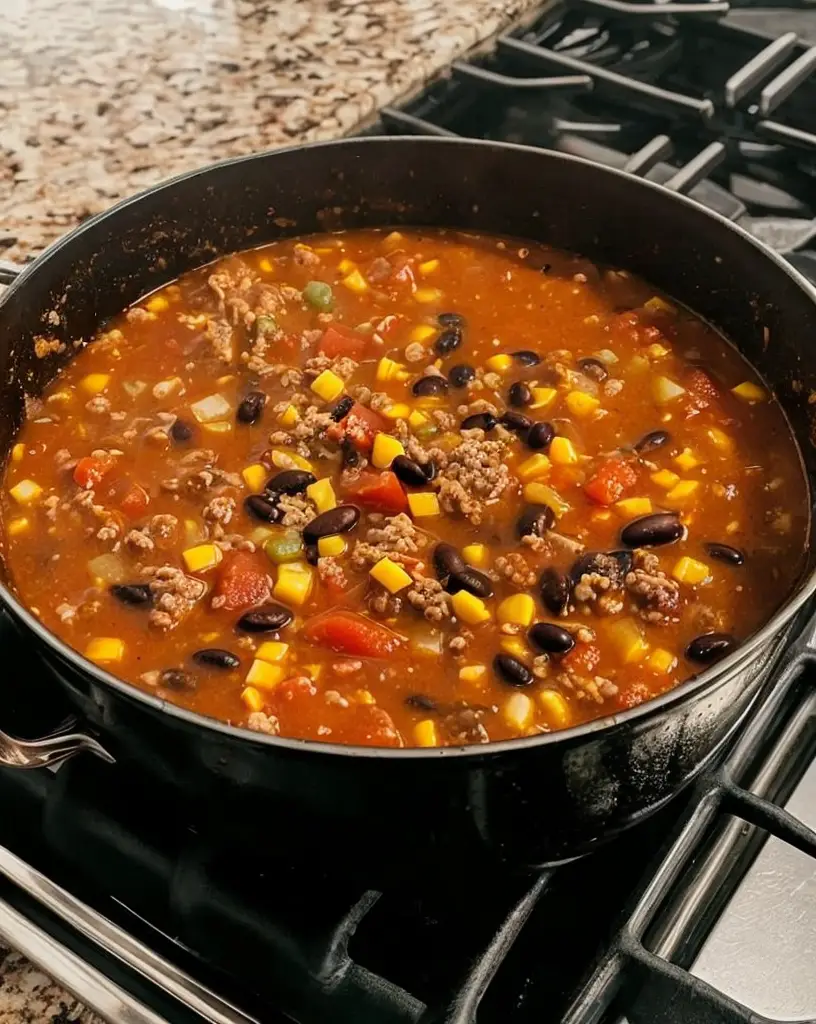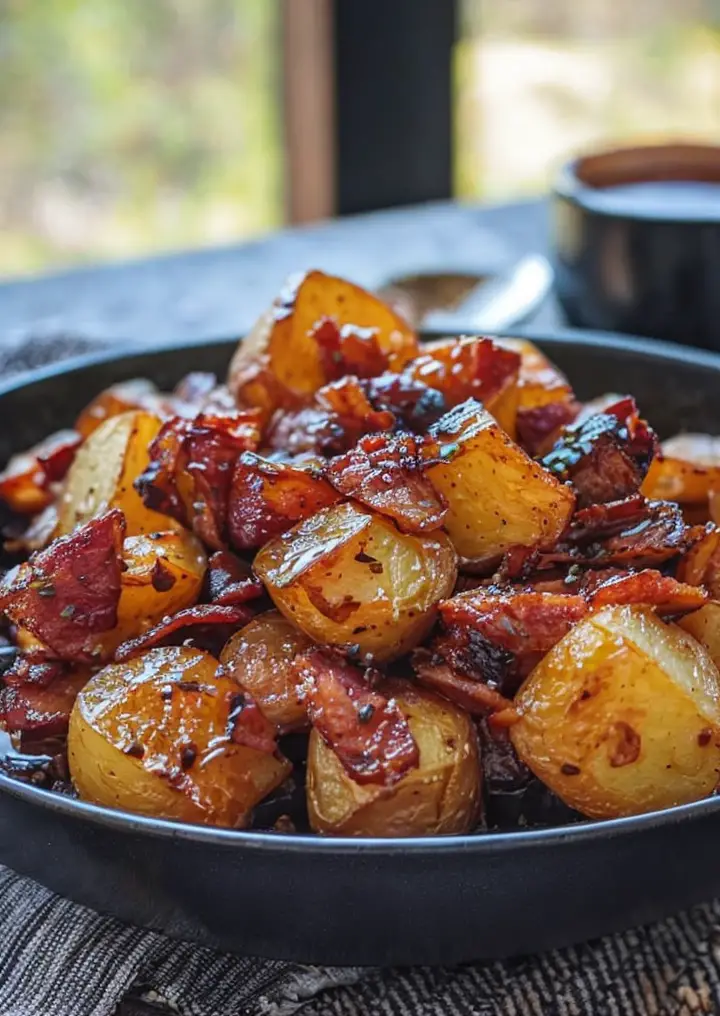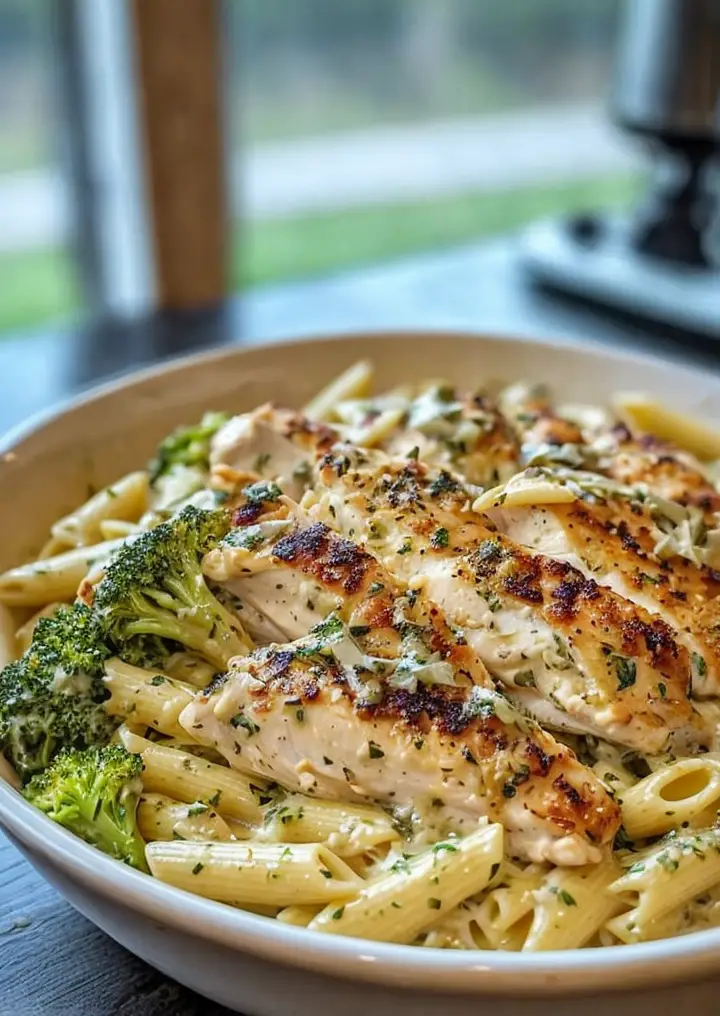The Best Taco Soup: A Hearty and Flavorful Delight
Taco soup is the ultimate comfort food that brings a fiesta right to your kitchen. It’s a perfect blend of hearty ingredients such as ground beef, beans, and whole tomatoes, creating a soul-warming dish filled with flavors that will make your taste buds dance. Each spoonful of taco soup brings the bold and zesty notes of taco seasoning, balanced with the freshness of vegetables, making it a satisfying meal for family gatherings or a cozy night in. The inviting aroma of spices wafting through your home will undoubtedly create an atmosphere of comfort and excitement.
Not only is taco soup delicious, but it also allows for creativity in your kitchen. You can easily modify the ingredients or toppings to personalize it to your favorite tastes. Whether you prefer extra spice from jalapeños or a dollop of smooth sour cream to cool things down, each variation is sure to delight. This recipe is perfect for busy weeknights, as it comes together quickly and can be ready in under an hour. Taco soup is not just food; it’s a feeling of home, shared laughter, and cherished memories, served in a bowl.
Quick Recipe Highlights
- Flavor Profile: A delightful balance of savory and spicy flavors, brought together with classic taco seasoning.
- Texture: Rich and hearty, the soup features a combination of tender meats, creamy beans, and crisp vegetables.
- Aroma: The enticing scent of spices like cumin, chili powder, and garlic fills the air, inviting everyone to the table.
- Visual Appeal: The vibrant colors of tomatoes, peppers, and toppings make this soup irresistibly appealing.
- Skill Level Needed: This recipe is ideal for beginners and seasoned cooks alike, with simple steps to follow.
- Special Equipment: A large pot or dutch oven is all that’s needed to whip up this delicious meal.
Recipe Overview
- Difficulty Level: This taco soup is easy to prepare, making it a great choice for novice cooks or weeknight meals.
- Category: This dish falls under the soup category, ideal for lunch or dinner any day of the week.
- Cuisine: Influenced by Mexican cuisine, taco soup celebrates the rich flavors of traditional tacos.
- Cost: Ingredients are budget-friendly, typically costing less than $20 to serve a family of six.
- Season: Enjoy taco soup year-round; its hearty nature makes it perfect for chilly fall and winter days.
- Occasion: Perfect for family dinners, game day parties, or as a make-ahead meal for your busy week.
Why You’ll Love This Recipe
Taco soup is a delightful symphony of flavors and textures, making each bite a culinary adventure. The combination of seasoned ground beef and creamy beans creates a comforting mouthfeel, while the fresh vegetables add morning crunch and brightness. You can jazz it up with various toppings, such as shredded cheese, diced tomatoes, or even avocado, which can elevate the soup’s taste further. This versatility allows you to adjust the recipe according to your family’s preferences, ensuring that everyone will enjoy it.
Convenience is another reason why taco soup is a favorite. It comes together in less than an hour, making it perfect for busy weeknights or unexpected guests. Simply throw all the ingredients into one large pot, let them simmer together, and you have a flavorful meal that barely required any effort on your part. Its one-pot nature also means fewer dishes to wash, which is a significant bonus when you’re enjoying a meal with family or friends.
Another aspect that makes taco soup appealing is its nutritional value. Packed with protein from the meat and beans, along with vitamins from the added vegetables, this recipe can help nourish your body and keep you full longer. You can also customize the ingredients to increase fiber or reduce fat content, turning this dish into a health-friendly option without sacrificing flavor.
Taco soup has a wonderful social aspect to it as well. Serving it at gatherings encourages sharing, whether there are tortilla chips for dipping or toppings spread across the table. It’s a conversational piece at any event, sparking discussions and allowing everyone to customize their bowls to their liking. This communal approach to dining can elevate your social experiences while enjoying a delightful meal.
Lastly, taco soup is an affordable and accessible recipe, making it an ideal choice for families on a budget. The ingredients are easy to find in any grocery store, and leftovers make for tasty lunches the next day. This cost-effectiveness, without compromising taste and quality, makes taco soup a favorite for many households.
Historical Background and Cultural Significance
The origins of taco soup trace back to Mexican cuisine, where ingredients like beans and tortilla strips are staple elements. As Tex-Mex cuisine evolved, it combined various elements from both cultures, creating dishes like taco soup that celebrate their rich culinary heritage. The blending of flavors from different regions showcases how food can unite diverse communities, reflecting shared traditions and modern lifestyles.
Taco soup holds a special place in many family gatherings, particularly in the Southwest United States, where it is often enjoyed during celebrations, game days, and potlucks. Its warm, hearty nature provides comfort during colder months while also being a filling dish that caters to a crowd. The cultural importance of shared meals resonates deeply, highlighting how food strengthens bonds and creates lasting memories among friends and family.
Over the years, the recipe has evolved from simple traditional ingredients to more elaborate variations, with cooks experimenting with different proteins and vegetables. This evolution showcases the adaptability of taco soup, allowing it to remain a popular choice that continues to grow with culinary trends while preserving its comforting roots.
Regional differences in taco soup have also emerged, with variations reflecting local tastes and ingredient availability. For instance, some skip the meat altogether for vegetarian versions or swap in unique proteins like chicken or chorizo. These adaptations enrich the taco soup experience, bringing different flavors and culinary techniques from around the country into each bowl.
Ingredient Deep Dive
Ground Beef: Ground beef is often the base of taco soup, adding a hearty protein that fills you up. It also carries the rich, savory flavors of the seasonings incredibly well. When selecting ground beef, opt for a lean option for a healthier meal. Store with care to ensure freshness, and consider alternatives like turkey or plant-based proteins for a lighter take.
Canned Beans: Canned beans are an essential ingredient in taco soup, bringing creaminess and added nutrition. Beans provide valuable fiber and protein while enhancing the soup’s texture. When selecting, check labels for sodium content to choose a healthier option. Store opened beans in airtight containers, and they can be easily substituted with dried beans if you prefer cooking from scratch.
Tomatoes: Canned diced tomatoes add depth and moisture to the soup, creating a juicy and flavorful base that ties everything together. Look for varieties packed in juice instead of syrup for healthier choices. Storage should be in a cool, dark place, and consider fresh tomatoes in summer for a delightful twist.
Bell Peppers: Bell peppers provide a splash of color and a crisp texture to the soup. Rich in vitamins and antioxidants, they’re a fantastic addition for both health and flavor. Choose firm, brightly colored peppers and store them in the fridge. You can also try different varieties, such as poblanos for a spicier kick.
Common Mistakes to Avoid
- Not draining canned beans: Always drain and rinse canned beans to remove excess sodium and unwanted flavors.
- Overcooking meat: Make sure not to brown the ground beef too much to avoid a dry texture in the final soup.
- Using too much liquid: Adjust the broth or water according to your desired soup consistency; too much will make it watery.
- Forgetting to season: Each ingredient needs seasoning; don’t skip adding salt and pepper or other spices to enhance the flavors.
- Skipping toppings: Don’t underestimate the impact of toppings; they add texture and flavor balance to your bowl of taco soup.
- Cooking vegetables too long: Slightly undercook the vegetables to maintain their crunch and prevent a mushy texture.
- Ignoring the simmer: Allow the soup to simmer long enough for flavors to meld; a rush will lead to bland results.
- Not tasting as you go: Regularly taste your soup during cooking to find the right balance of flavors significantly enhance your final dish.
- Overloading on beans: While nutritious, too many beans can overshadow other flavors; use a balanced amount according to your taste.
- Serving too cold: Ensure your taco soup is served hot to fully enjoy its comforting and hearty flavors.
Essential Techniques
Browning Meat: Browning is crucial for enhancing flavor. Use high heat and let meat sit undisturbed for a few minutes. Avoid the temptation to stir too soon; that caramelization adds depth. Look for a rich brown color indicating it’s ready to mix.
Sautéing Vegetables: Sautéing bell peppers and onions helps to soften them, releasing natural sweetness. Use medium heat and make sure to stir occasionally to prevent sticking. They’ll transition from bright and crunchy to tender, adding aromatic depth to your soup.
Simmering: Simmering allows the flavors to blend beautifully. Ensure the heat is low enough to bubble gently without boiling aggressively, which can break down ingredients. Visual cues include tiny bubbles and steam—perfect signs of deliciousness developing.
Tasting and Adjusting Seasoning: Tasting as you go is essential for the best taco soup. Adjust spice levels while cooking; just a pinch of salt or a dash of lime juice can bring out hidden flavors. This iterative approach results in a well-balanced dish.
Pro Tips for Perfect Taco Soup
– Always brown your meat before adding it to the pot for fuller flavors.
– Balance acidity with a squeeze of lime juice right before serving for a bright finish.
– Experiment with different beans, like black or pinto, for added texture and taste.
– Allow the soup to sit for a while before serving, as it will taste even better reheated.
– If spice isn’t your thing, add pepper jack cheese as a milder topping for creamy heat.
– Use high-quality taco seasoning or make your own for a fresh flavor that exceeds store-bought packets.
– Consider using a slow cooker—brown the meat, add it to the slow cooker with other ingredients, and let it simmer for hours to deepen flavor.
– Use corn tortillas as a crunchy topping instead of chips for a unique twist.
Variations and Adaptations
Taco soup is incredibly adaptable, allowing for various flavor profiles and ingredients. You can introduce regional variations by adding local ingredients such as spicy chorizo or fresh corn. Seasonal adaptations might involve including summer produce like zucchini and fresh herbs for a light, refreshing touch. If you’re looking for dietary modification, the recipe can easily become vegan by replacing the ground beef with lentils and using vegetable broth instead of chicken broth.
For unique flavor variations, experiment with spices like smoked paprika for depth or fresh cilantro for a burst of freshness. Additionally, if you desire different textures, consider incorporating creamy avocado, crunchy tortilla strips, or even cheese to contrast with the hearty soup. Lastly, presentation can be enhanced by garnishing with lime wedges and chopped green onions, elevating this comforting dish visually.
Serving and Presentation Guide
Plating your taco soup can turn a simple meal into a culinary experience. Use deep bowls to hold the hearty soup generously. Consider using colorful bowls that contrast the rich tones of the soup to make it visually appealing. A sprinkle of cilantro, a wedge of lime, and a dollop of sour cream on top can create an artful presentation that tempts everyone at the table.
Garnishing with bright toppings adds not just visual appeal but enhances the eating experience with extra flavor. Pair your soup with crispy tortilla chips arranged on the side for a delightful texture contrast. Consider serving with a fresh salad or cornbread to create a complete meal. Serve the soup piping hot, as temperature elevates the flavors significantly; warm bowls can help maintain heat during the meal.
Wine and Beverage Pairing
Pairing your taco soup with the right beverage can further enhance the flavors. A zesty Sauvignon Blanc complements the spices in the soup, while a light-bodied red like Grenache brings out the richness of the meat. Consider serving chilled cocktails like margaritas or a citrusy mojito to harmonize well with the spiciness.
For non-alcoholic alternatives, a refreshing limeade or iced tea flavored with mint can provide a cool contrast to the dish’s warmth. If you’re serving taco soup for brunch, consider a spicy bloody mary to elevate this casual meal. Serving the wine chilled on warmer days can balance the hearty nature of the soup, while hot beverages like Mexican hot chocolate would be a delightful accompaniment during the colder months.
Storage and Shelf Life
Store any leftover taco soup in an airtight container in the fridge, where it can last for up to three to four days. When storing, allow the soup to cool completely before sealing to prevent condensation, which may cause spoilage. For longer storage, taco soup can be frozen; ensure it is stored in freezer-safe containers or bags with the air removed to maintain quality.
Signs of spoilage include off-smells, discoloration, or an unusual texture. When reheating, warm it thoroughly on the stove over medium heat or in the microwave until it’s steaming hot. If frozen, it’s best to thaw overnight in the fridge before reheating. Always stir well before serving, as ingredients may settle during storage.
Make Ahead Strategies
Preparing taco soup ahead of time is easy and convenient. You can brown the meat a day in advance and store it separately, which saves time on busy nights. Chop vegetables ahead of time and store them in airtight containers for quick access. Assemble the rest of the ingredients ahead, keeping the broth and spices ready to go for when you’re ready to cook.
If you’re making a larger batch, consider freezing portions. Taco soup holds its flavor well, and reheating will not detract from its taste. Additional toppings like sour cream or fresh herbs can be added shortly before serving to maintain freshness. This proactive planning means you can enjoy a hearty, home-cooked meal without the last-minute rush in the kitchen.
Scaling Instructions
Scaling taco soup is simple and allows for flexibility in serving sizes. For halving the recipe, adjust the ingredient quantities, keeping the spice levels balanced to maintain flavor. If doubling or tripling the recipe, be mindful of your pot’s capacity while ensuring the proportions of spices remain consistent.
Equipment adjustments might be necessary if you’re scaling significantly; using a larger pot or batch cooking in multiple pots can help maintain even cooking. During timing modifications, expect a slight increase when cooking on larger volumes; check regularly to ensure doneness. Store any extras appropriately for future meals, maximizing your efforts in the kitchen.
Nutritional Deep Dive
The nutritional breakdown of taco soup showcases its balance of macronutrients. Each serving typically contains a healthy dose of protein from the ground beef and beans, while fiber from vegetables and beans promotes digestion and satiety. Carb content can vary based on ingredient choices, particularly with more beans or added corn.
Micronutrient analysis highlights important vitamins like Vitamin C and fiber, which come from fresh vegetables & legumes. Taco soup can be a heart-healthy dish when prepared with lean meats and low-sodium options. Pay attention to portion sizes, especially with richer toppings, to maintain a balanced meal that aligns with dietary goals while enjoying a hearty, comforting dish.
Dietary Adaptations
For those needing dietary modifications, taco soup can easily adapt to various needs. A gluten-free version can be made by ensuring broth and seasonings are certified gluten-free. Swap sour cream with dairy-free yogurt for a dairy-free take, and use jackfruit or lentils for a vegan adaptation full of nutrition.
For low-carb diets, focus on reducing the amount of beans or serving in a lettuce wrap instead of traditional tortilla chips. Efforts can be made to make it keto-friendly by using cauliflower rice in place of beans. Using whole food ingredients not only satisfies dietary needs but adds a wholesome element to the soup.
Troubleshooting Guide
If your taco soup turns out too watery, consider cooking it down uncovered for a few minutes to thicken. For flavor balance issues, gradually adding salt or lime juice can help; add these small amounts until the desired taste is achieved. If the soup is too spicy, a touch of sugar or cream can tone down the heat.
Temperature problems, like serving cold soup, can be resolved by thorough reheating. Should ingredients not be cooking evenly, ensure stirring regularly and adjusting heat helps maintain consistency across the pot. When using substitutions, be mindful of varying cook times which can affect the final outcome of your dish.
Recipe Success Stories
Community feedback for this taco soup recipe has been overwhelmingly positive. Many home cooks have shared their variations, highlighting the ease and versatility of the dish. Some have embraced it at family gatherings, raving about how it became a crowd favorite, and others have successfully used it as the base for creative adaptations that highlight seasonal ingredients.
Readers have engaged by sharing tips on topping combinations that elevated the flavor profile, such as unique salsa or fresh, seasonal vegetables. Those new to cooking have reported newfound confidence in making this satisfying soup, often returning to it as a go-to staple for easy weeknight meals.
Frequently Asked Questions
Yes! Brown the meat first, then add all ingredients to your slow cooker. Cook on low for 6-8 hours for a deep flavor infusion.
2. Is taco soup gluten-free?
It can be gluten-free! Just choose gluten-free broth and check that your seasoning is free from gluten.
3. How long does taco soup last in the refrigerator?
Taco soup can be stored in the refrigerator for up to 4 days in an airtight container.
4. Can I freeze taco soup?
Absolutely! Freeze leftovers in a sealed container for up to 3 months. Thaw overnight in the fridge before reheating.
5. What toppings can I use for taco soup?
Popular toppings include shredded cheese, crushed tortilla chips, avocado, sour cream, and fresh cilantro.
6. Is taco soup healthy?
Taco soup can be healthy, especially when made with lean meats and loaded with vegetables. Adjust ingredients based on your nutritional needs.
7. Can I use different meats in taco soup?
Yes! Ground turkey, chicken, or even vegetarian protein like lentils work well in taco soup.
8. What kind of beans should I use?
Common options include black beans, pinto beans, or kidney beans, all of which add great flavor and texture.
9. Is there a vegetarian option for taco soup?
Yes! Simply replace meat with a plant-based protein or beans and use vegetable broth for a delicious vegetarian version.
10. What’s the best way to reheat taco soup?
Reheat on the stove over medium heat, stirring occasionally, or in the microwave until steaming hot.
11. Can I customize the spice level?
Absolutely! Adjust the amount of taco seasoning or add fresh chilies to suit your heat preference.
12. How can I make taco soup spicier?
Add jalapeños or cayenne pepper to introduce extra heat into your soup.
Additional Resources
If you enjoyed this recipe, consider checking out other comforting soups like chicken noodle or minestrone that offer a similar hearty experience. Explore technique guides for effective browning or sautéing tips to elevate any soup or dish. Get acquainted with various ingredient information, focusing on the benefits of beans or seasonal produce that can be incorporated into your cooking.
For those looking to invest in kitchenware, recommendations for essential equipment, like a high-quality knife set or heavy-bottomed pots, can make cooking even more enjoyable. Lastly, check out seasonal variations that provide fresh, flavorful ingredients to inspire your next taco soup.
Join the Conversation
We want to hear your thoughts! Share your experience with taco soup on social media using our hashtag. Consider posting your culinary creations or photos of your dish to inspire others in the community. Encourage friends and family to try this recipe and share their versions or adaptations, spreading the joy of cooking and savoring delicious meals together.
Join our cooking community for exchanges of tips, ideas, and recipe variations. Share any unique secrets you’ve uncovered or offer insights that could enhance this already delightful meal. Let’s cultivate a lively conversation around this family favorite, making home cooking more enjoyable for everyone!
The Recipe
The Best Taco Soup
Serves: 6 servings
Prep Time: 15 mins
Cook Time: 30 mins
Total Time: 45 mins
Kitchen Equipment Needed
- Large pot or Dutch oven
- Wooden spoon
- Cutting board
- Chef’s knife
- Measuring cups and spoons
Ingredients
- 1 lb ground beef
- 1 can (15 oz) black beans, drained and rinsed
- 1 can (15 oz) kidney beans, drained and rinsed
- 1 can (14.5 oz) diced tomatoes
- 1 can (15 oz) corn, drained
- 1 onion, chopped
- 1 bell pepper, chopped
- 2 cups beef broth
- 2 tablespoons taco seasoning
- Salt and pepper to taste
- Optional toppings: shredded cheese, sour cream, cilantro, tortilla chips
Directions
- In a large pot, brown the ground beef over medium heat until fully cooked; drain excess grease.
- Add chopped onion and bell pepper; sauté until tender.
- Stir in black beans, kidney beans, diced tomatoes, corn, beef broth, and taco seasoning.
- Bring to a boil, then reduce heat and simmer for 20-30 minutes, allowing flavors to meld.
- Taste and adjust seasoning with salt and pepper as needed.
- Serve hot, garnished with desired toppings.
Recipe Notes
- Feel free to add or substitute your favorite veggies, such as zucchini or corn.
- Can be prepared ahead of time and stored in the fridge for quick weeknight meals.
- Leftovers can be frozen for future meals—just ensure you reheat thoroughly.




